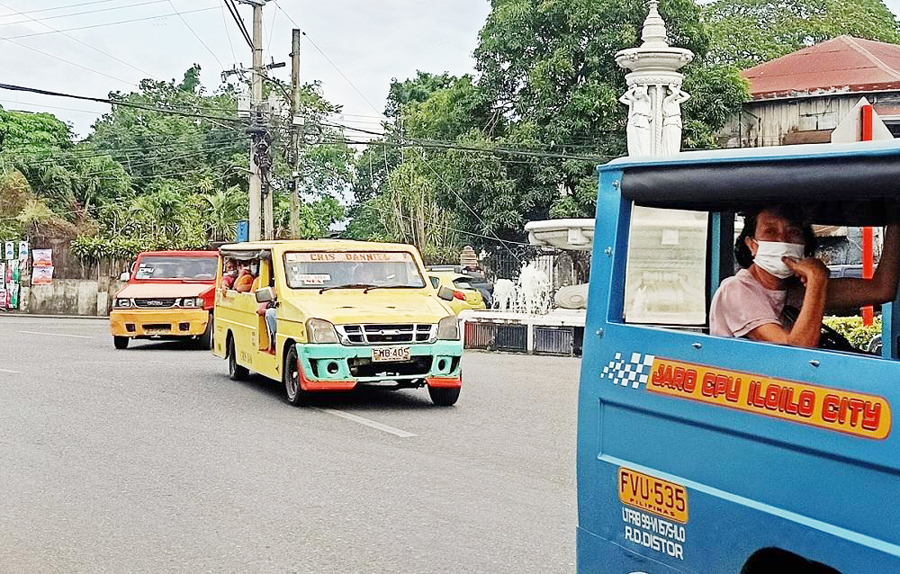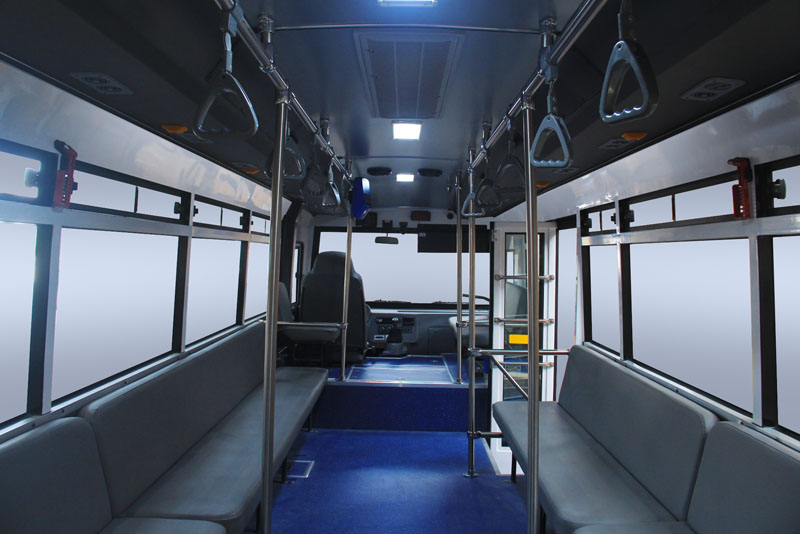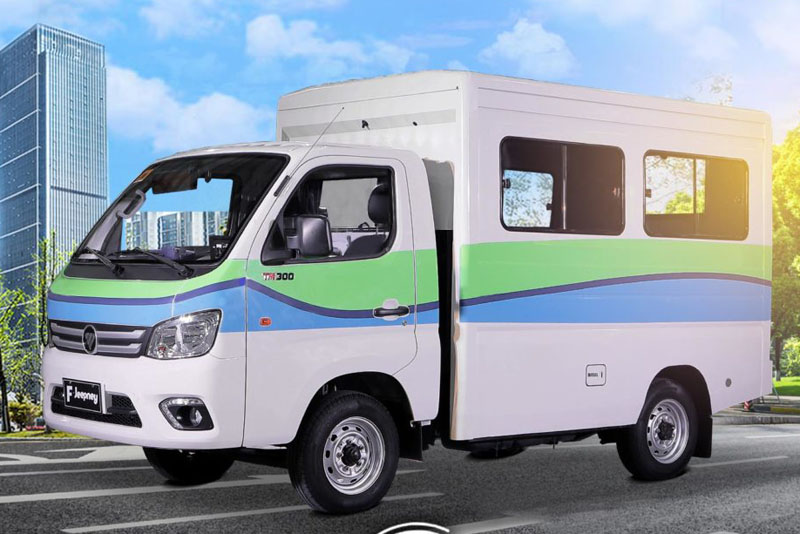At A Glance
- The Jeepney Phase-out is a major overhaul of how PUV franchises are granted and routes are organized.
- Drivers and operators are asked to form cooperatives or corporations to share the burden of acquiring, maintaining, and operating modern jeepneys.
- Single proprietors are no longer allowed as acquiring, driving, and maintaining a jeepney is too much for one person
- The laptop analogy fails to take into account the cooperative requirement, the many choices of jeepneys, and the main reasons for the upgrade: transport efficiency and commuter safety.
Over the course of the Jeepney Phaseout debate, there’s been several arguments both for and against that have continued to stoke the fires over whether it should push through or not.
There have been many aired, but there’s one argument that’s frequently been shared when it comes to the plight of the jeepney drivers and operators. That argument has been to compare the PUV Modernization program to an office’s mandate that an employee upgrade their laptop at their own expense.

Chances are, you’ve read this argument on social media. In an attempt to make the entire debate more relatable, a netizen has compared the jeepney phaseout to a mandatory laptop upgrade. In this analogy, the government is analogous to an employer, while the employee is analogous to the jeepney driver or operator, and finally, the laptop serves as a metaphor for the old jeepneys themselves. It states that the employer is forcing the employee to upgrade their laptop that they use for work to a newer and more powerful Apple Macbook, but at their own expense all in the hopes of presenting a more professional image for the office. While it’s certainly easy to feel sorry for the employee in this analogy, the central metaphor fails to take into account many key points in the overall debate, therefore making it an inadequate analogy. We’ll go over these points one by one.
Passengers' lives at stake

It’s easy to compare the jeepney to laptop as they’re both tools to complete a job, however the main reason jeepney drivers and operators are being made to upgrade is because of the passengers’ safety; not simply for the company’s image. Unlike an employee and laptop, when a jeepney driver takes on passengers, those passengers’ lives are in his hands. As such, it's important to have updated equipment that meets modern standards.
Public transport operators’ main responsibility is the lives of their commuters and the reason there is so much government oversight regarding their vehicles, fares, operations, and routes is because it’s important that they can safely transport passengers from one point to another without incident.

If theses classic jeepneys — with varying sizes, builds, and engines, questionable reliability, faulty brakes, unsafe rear loading, and sometimes inoperable lights and indicators — are allowed to continue operate, their dated design and near lack of safety features puts passengers’ lives at risk. Not to mention the unreliability of the vehicles themselves could cause passengers to be late, affecting productivity and, by extension, the economy. Finally, the old engines used in these vehicles were built before modern emissions restrictions. Thus they will continue to emit toxic fumes that may slowly poison the passengers, and any pedestrian on the road.
Not a one-to-one expense

Perhaps another aspect of the PUV Modernization that the analogy fails to address is the main requirement that jeepney drivers shift from a single operator / franchise-holder to a cooperative or corporation. It’s not a one-driver to one-jeepney ratio but rather multiple drivers to multiple jeepneys. Through this system, the government hopes to bring a larger group of people to work together to maintain a franchise and route.
With a cooperative or corporation, the tasks of driving, maintaining, and dispatching a jeepney can be done by several individuals instead of the single operator / franchise-holder system of the past where the operator has to juggle all those tasks. With a cooperative that has multiple jeepneys, several operable jeepneys can be dispatched to a route while those that need repair can stay behind and be worked on. As such, the route is still served, income continues to flow, and repairs can be done immediately instead of put off.

Drivers can share the load as well. Rather than one driver / operator being behind the wheel for a staggering 12 -16 hours a day, they can be given shorter shifts to several drivers per jeep of as little as 8 hours each, allowing drivers to be well rested and alert enough to serve their routes, without the risk of fatigue that may cause an accident. In addition, each modern jeepney will be travelling with a passenger officer who will direct passengers to empty seats, ensure the maximum capacity is not exceeded, and collect fares. This leaves the driver undisturbed to simply focus on driving.
Finally, the cost of acquiring and maintaining the modern jeepneys is not put upon a single driver, but rather all the members of the cooperative, making it easier to pay for and manage. Acquiring the modern jeepneys can be shared by all the members of the cooperative, drastically bringing the cost down and putting the economies of scale into effect, allowing them to command discounts from vehicle suppliers and friendlier installment terms since they are buying in bulk. In addition, these cooperatives can trade-in their jeepneys for further relief from the sticker price. Banks like Landbank are also offering installment plans cooperatives can avail of to acquire these modern jeepneys.
There are many cheaper models to choose from

Another argument overlooked is the fact that jeepney cooperatives are not required to get the biggest and best or most expensive model. In fact, the PUV Modernization has multiple accredited models for cooperatives to choose from, ranging from the very affordable Class 1 vehicles that range from to P1.1M to P1.6M to the more expensive Class 2 and Class 3 that are often cited as the expensive models priced at P1.7M to P2.2M even though these are best used for longer, more highly populated routes.

Jeepney operators are not required to buy Class 2 or Class 3 vehicles. In fact, in many routes, a smaller, more affordable Class 1 Modern PUV will suffice. It’s not like they could be filled to standing room either as strict maximum capacity rules are enforced.
If it were compared to a mandatory laptop upgrade, naturally, everyone would want to have a Macbook to work with, however, in truth, most employees will be fine with just a generic netbook, or middle spec laptop. The Macbook is not required, it’s just one of the accredited options.
A long overdue requirement
Finally, this is not something sprung on jeepney drivers and operators at the last minute. The PUV Modernization traces its proposal in 2015 and first planned implementation as far back as 2017. The government has been trying to implement it for nearly 7 years now with extension after extension granted to allow jeepney drivers and operators to make the shift
Nothing like a laptop upgrade
After all these points, we hope citizens and commuters will see that comparing the Jeepney Phaseout to a simple laptop upgrade is a poor and inadequate analogy. There are many aspects of the program that the analogy glosses over or even fails to take into account entirely. Granted, the upgrade and shift from single proprietor to cooperative and purchasing new vehicles is still a major undertaking. However the terms aren’t as heavily stacked against the jeepney drivers and operators as one might think.
With these in mind, this is how that analogy should have been written. And perhaps after reading it, many will see the PUV Modernization program is not as oppressive as some are making it look like.
Nagbigay ng memo ang office niyo na papalitan na lahat ng PC niyo ng mas bago. Binigay ang memo noon 2017 pa.
Nagbigay ang office ng listahan ng accredited laptops, at habang nandoon sa listahan ang Apple MacBook, hindi ito required.
Kaso hindi ang office magbabayad nito, kundi ang mga empleyado. Ito ay dahil lahat ng trabaho ay magiging group project na. Hindi na pwede ang individual work para hindi mapagod ang mga empleyado.
Inaatasan kayong gumawa ng mga grupo ng empleyado para mapadali ang group project at pagbili ng bagong laptops. Kahit gaano kalaki ang grupo, basta ang minimum ay 20 laptops bawat grupo. Sa bagong grupo, pwede ka pa rin sa client servicing, or pwede ka magbago ng trabaho bilang management, dispatcher, accounting, or IT ng grupo. Kailangan gumawa ng shifts ang mga empleyado para salitan sa client services. Hindi na pwede magtrabaho sa isang project ng lampas 12 hours tuloy-tuloy kada araw para hindi ka na mapagod. At kelangan maraming laptop para kapag nasira ang isa, may mga papalit naman at tuloy-tuloy ang trabaho. Hindi kelangan gamitin ang lahat ng laptop saby-sabay.
Ang grupo ang magde-dedesisyon kung alin ang laptop na bibilhin at papaano babayaran. Sa listahan ng accredited laptops, marami mapag-pipilian mula murang netbook, or hanggang mabilis pero mahal na Macbook. Iba-ibang brands pa ang pwede, tulad ng Sony, Asus, Lenovo, at kung ano pa, hindi lang Apple. May workload limit din ang mga laptop (depende sa modelo) para hindi sila mag-hang sa dami ng trabaho o masira.
Pwedeng bilhin ng hulugan ng laptop. Pwede rin i-trade-in ang lumang laptop o PC para may discount pa. Puwedeng lumapit sa bangko para mag-installment at may auto-debit pa sa hulugan mula sa kinita ng laptop. Pwede pa mag-lagay ng advertisement sa mga laptop para sa karagdagang kita.
Sabi ng office, ginagawa ito hindi para sa image ng kumpanya, kundi para mas epektibo ang mga operation at project ng kompanya at hindi ma-perwisyo ang mga kliyente.
Nakiusap ka, sinabi mo di mo kaya magbayad ng ganoon. Pumayag naman ang kompanya at 6 years na itong na-postpone para maghanap ka ng grupo, pero hindi na pwede i-postpone ulit.
Hindi na ikaw ang nagmamay-ari ng laptop kundi ang grupo na. Sila na rin magbabayad ng hulugan at maintenance nito. Kung kelangan mo, ay pwede mo naman hiramin.
Pinagbabawal na ang individual work dahil hindi kaya ng isang tao ang magbayad, mag-maintain at magpatakbo ng laptop. Mandatory ang group para mas madali ma-organize ng office ang mga grupo. Hindi mo na kailangan i-pa-inspect at iparehistro ang laptop kada taon, kundi ang grupo na.
Yan ang PUV Modernization. Yan ang programa ng gobyerno na hinanda para mapadali ang trabaho at pag-upgrade ang mga jeepney drivers, at para mapadali ang buhay ng commuters.